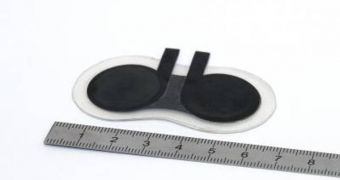Through their very nature, batteries are known to be rather bulky and large in size. Those that are not generally store less power, and need to be changed more often. Numerous innovations over the past few years have taken battery production to a whole new level, and a large array of new materials has since been used. But now, researchers at the Fraunhofer Research Institution for Electronic Nano Systems ENAS, in Chemnitz, Germany, have developed a printable battery, which can be easily and readily mass-produced.
Having worked together with colleagues from the TU Chemnitz and Menippos GmbH, also in Germany, the research team say that, “Our goal is to be able to mass produce the batteries at a price of single digit cent range each,” which basically means that they want to refine the process to such an extent, that producing them would be as inexpensive as producing paper itself. In charge of the investigation team was Professor Dr. Reinhard Baumann, also from the Fraunhofer Institution.
The new power storage device is not similar to other batteries in appearance and shape, weighing in at less than one gram, and measuring less than a millimeter in thickness. It could easily be inserted in eurocheque cards (EC), and could be used to power up a small display incorporated in the piece of plastic that would show, for example, the transaction authentication number (TAN). Additionally, it could also be employed inside greeting cards or other such devices, but it is best suited for applications in which only a limited life span is required.
Despite its size and weight, the battery is made up of several layers of material, including a zinc anode and a manganese cathode, which react with each other to produce electricity. However, during the reactions, the layers consume each other, which means that the battery life is not very long. Still, in greeting cards, they could perform admirably, and another advantage is the fact that several of them can be hooked to each other so as to obtain 3 V, 4.5 V and 6 V voltages, as opposed to the regular 1.5 V.
Producing these batteries is as simple as employing a silk-screen printing method, which is now commonly used in printing T-shirts, or ads and commercials. Through the screen, printing paste is injected on a substrate (plastics, paper, textiles), and then other layers are added. Thus, each of the layers on the substrate is only as thick as a human hair, which allows for its size to be kept in check.

 14 DAY TRIAL //
14 DAY TRIAL //